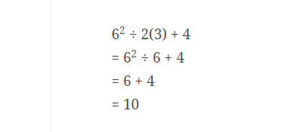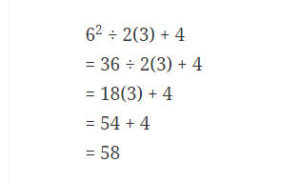Viral Math Problem Explained
There is this one mathematical problem ( 6^2 ÷ 2(3) + 4? ) that is circulating on social media and we want to share the explanation for you to understand and to know the answer to it.
Some people would answer 10. Other would conclude 58. But what do you think is the exact answer?
This equation ( 6^2 ÷ 2(3) + 4? )can be done in two different ways. If you get 58 then maybe because you are not distributing the 2 to the 3 inside the parentheses. And I think the right way to do it is to read the operation from left to right to get the answer of 58.
Watch the video below:
This is how it should be done.
There are 2 ways to read the equation.
You will get 10 by evaluating the 2(3) term first.

To get 58, make the brackets as multiplication, so you are dividing by two and then multiplying by 3.

If you are going to check the answer online, you’ll get the answer 58, click this link to see it for yourself: 6^2 ÷ 2(3) + 4.
The same 58 answer appears when you equate the equation into Google.
As the calculator interprets the order of operation, this means that the parenthesis are used as multiplier. So you should evaluate 6^2, then divide it by 2, then multiply by 3, and finally add 4. Which gives you the answer of 58.
The clearer point there is the way the expression is written because it appears ambiguously. If you need to divide by 2(3), then it should appear:

It’s like interpreting and understanding the sentence:
“I saw the man with binoculars.”
Does it mean: were you looking at the man who was holding binoculars or did you use binoculars to see the man?
In Mathematics, you should avoid this kind of ambiguity by writing expressions clearly and following conventions.
So what can you say about this one? Let us know your thoughts in the comment section below, and don’t forget to share this blog post with your family and friends online. And also, visit our website more often for more updates.

have we forgotten – MY DEAR AUNT SALLY ? Multiply first all multiplications in the equation, then divide all the divisions, then add what has to be added and finally subtract what has to be subtracted. This will give the answer = 10.